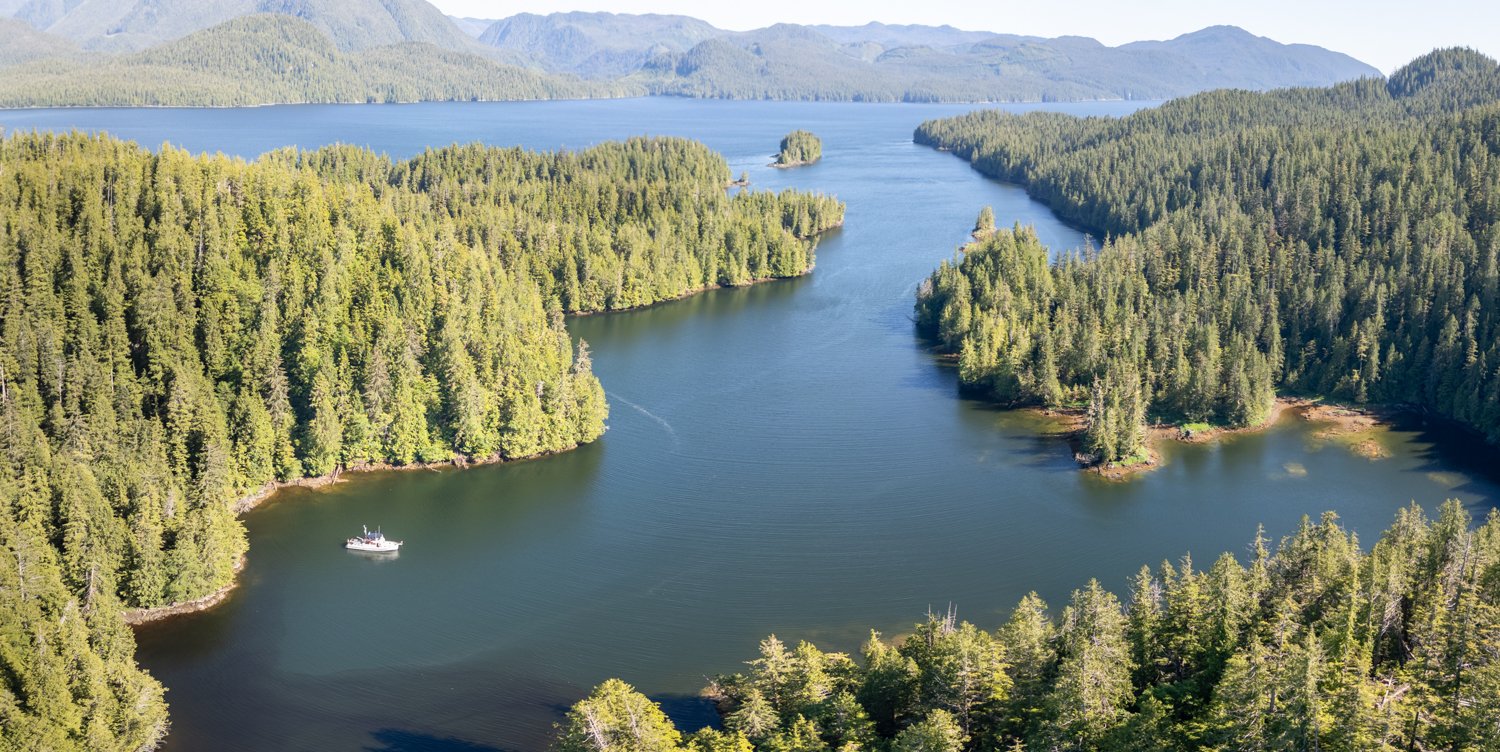Draney Inlet Lay Day
/Today is the day.
We have traveled the 1.5 hours up the inlet to position ourselves to go up the Lockhart Gordon Creek at high tide.
Yesterday we sat and gathered information for the dinghy journey. We watched a full tide cycle and took drone photos at various tide levels. All this informs our route planning and gives some level of confidence before making the trip.
One hour before the high tide at the Draney Inlet reporting station, we set out on a lower-high tide of 10.29 feet. My tide charts indicated we would be on a still rising tide and would have two hours before the water returned to the same level, plenty of time to explore.
The route I planned was to leave the island on my starboard side and then turn left and north, setting a course toward the large pile of debris at the north side of the inlet. Coincidentally, there was a very visible current flow marked by water smoother than the surrounding water featuring a trail of visible surface bubbles.
This current flow was almost identical to my planned path, so I positioned the dinghy in the middle of it and split my attention between the depth sounder and the water. This outer approach saw depths from 7-8 feet with an occasional 6 foot. I saw only a few obstacles that were sunken logs. Generally, no factor.
Island on the right. DeBris Pile on the LEft. THe stream of bubbles I followed on this day.
As you pass the landslide debris you start to enter the more defined deeper water that runs along the north side. I had picked out a few major logs in the photos that I thought would be visible at today’s higher water. Using them and the current flow as guides, we made our way into the river proper.
entering the river proper
The river is flanked by grassy growth on both sides at it meanders at about 10-ish feet of depth.
Following my instincts from going down many rivers, we made our way until we saw a large tree downed across the river. These are commonly known as sweepters by kayakers as they tend to sweep kayakers out of their vessels as they try and sneak under.
the water shallows as we approach our first sweeper
As we got closer, I saw that the tree did not go all the way to the opposite shore. It actually fell 8 feet short of the opposite shore. The question then became is there enough water that close to the shoreline to pass. Only one way to find out. I approached slowly, taking the raised engine in and out of gear while maintaining one eye on the depth finder and the other on the pebble bottom.
can we sneak but this sweeper?
We made it past with 1.7 feet under the dinghy, and then the depth held at about 3.6 feet for a while.
Our next sweeper was a much larger partially fallen tree. It lay at about a 20-degree angle. As we approached, it became apparent that there was enough clearance to take the dinghy underneath without being “swept over”. All we needed was enough water where we planned to pass beneath.
we’re going to have ot go under this sweeper
That depth was about 1.6 feet, and we continued at that depth, eventually reaching the terminus marked by rocks and tree debris. It took us about 40 minutes to get to the head.
All in all, we traveled about two miles to the head of the creek from OceanFlyer. It was less of a challenge than the photos first showed. We had enough water, sun at our backs and a realistic preview from the drone photos.
The river is really pretty, and we dropped anchor a few times on the way out to just sit back and enjoy the view. It’s clearly bear territory, but we didn’t see any, despite keeping a sharp eye out.
Later, though, as we were relaxing after stowing the dinghy aboard OceanFlyer, I looked up and saw a critter in the grassy outcropping behind the boat. I called out “critter” because it first I thought it might be a smaller mammal.
But we shorty realized it was a grizzly that came to attack the tall sedge grass. Karen noted just how big his head and ears were. We watched for almost an hour as he enjoyed the buffet on an outcropping. Looking through the binoculars, you could see he was stuffing that sedge in with a passion. To our surprise, when he was satiated, he then jumped in the water and swam at least 50-75 yards to a small islet that was attached to the shore via a fallen tree land-bridge. He climbed out, shook off the saltwater and disappeared into the woods.
time to start the swim home
a quick glance over the shoulder before disappearing into the woods
Draney Inlet isn’t a place many cruisers explore, but we really enjoyed it and thought it well worth the visit. The fact that there wasn’t another boat around made it even more special.



































